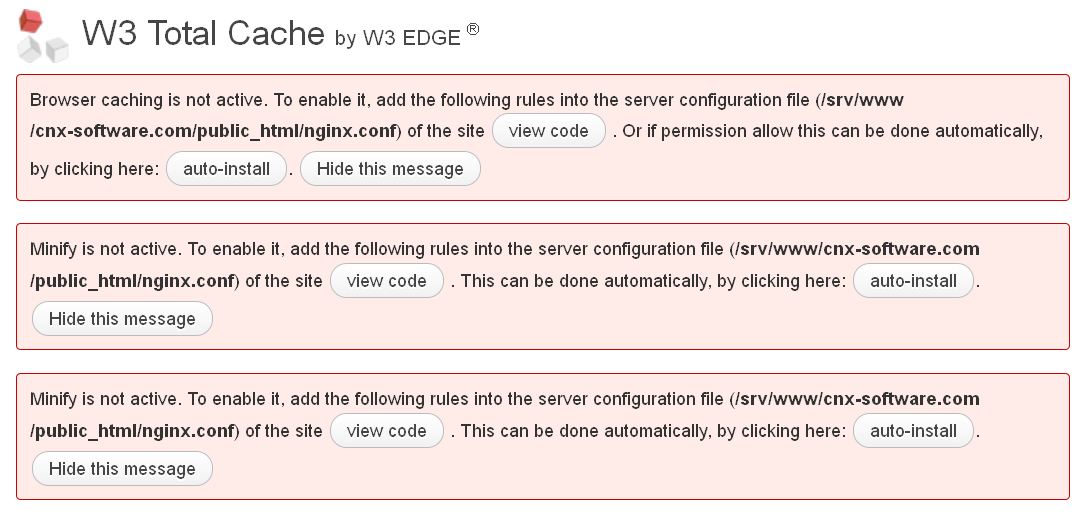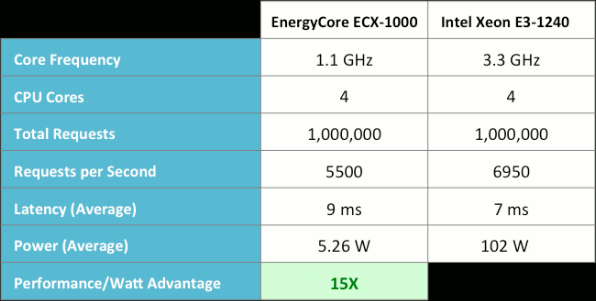This blog is hosted on a Linode VPS with 512 MB RAM and running Ubuntu 11.10. Up until today, Apache2 was the web server, and it worked fine except sometimes, it reached connection and memory limits, and the blog would go offline for a short period of time, especially right after a new blog post. So this week-end, I decided to switch to nginx (pronounced engine-x) web server which is said to use less memory than Apache2. Let me know if something suddenly stopped working… nginx is a relatively recent web server, and the documentation on the web seems to become outdated pretty fast, so I’ve decided to document what I’ve done. The first thing I would recommend is to try it in your own local server first, and make sure most things are working including plugins. Testing your WordPress blog with nginx in a local server I run Ubuntu […]
Ubuntu 12.04 Server ARMHF Image for Mele A1000/A2000
I’ve seen quite a few people who want to use the Mele A1000 – or its brother the Mele A2000 – media player as a server (Sacrilege!). Since recent ARM servers are running Ubuntu 12.04, and Tom Gall has (conveniently) posted the live-build config necessary to generate Ubuntu 12.04 Server image this week, I thought I’d give it a try on Mele A1000. The image generated is a headless system running Apache 2 and sshd (openssh_server). I’ll detail the steps I followed to generate this image first, so if you just want to try the SD card image, scroll down at the end of the post. The first step is to generate Ubuntu Linaro Server rootfs, by following the Live-Build instructions on Linaro website together with Tom’s live build config. I’ve followed those steps in a machine running Ubuntu 12.04. Let’s install the required packages:
|
1 2 3 |
sudo add-apt-repository ppa:linaro-maintainers/tools sudo apt-get update sudo apt-get install live-build multistrap qemu-user-static git p7zip-full |
Configure the build and […]
ARM vs x86 Servers Benchmark – Calxeda EnergyCore ECX-1000 vs Intel Xeon E3-1240
Calxeda has released the results of ApacheBench benchmark comparing their ARM-based EnergyCore solution to an Intel Xeon server in order to showcase the performance and the much lower power consumption of their servers. Here’s the setup: Hardware: Single Calxeda EnergyCore ECX-1000 @ 1.1 GHz, 4 GB of DDR3L-1066 memory, 1Gb Ethernet network port and 250 GB SATA 7200rpm HDD Intel Xeon E3-1240 @ 3.3 GHz, 16 GB memory and 1Gb Ethernet network port. No info on hard drive provided Software: Ubuntu Server v12.04 Apache Server v2.4.2 ApacheBench v2.3 (16k request size) They performed power measurements every 2 seconds and averaged the results. Power supply overhead and hard drive power consumption were not excluded in the measurement, but the entire SoC and DDR memory power consumption were included together. For the Intel server however, they could not measure directly, so they used published TDP values for the CPU (80 W) and I/O […]
Collabora and Fluendo Release GStreamer SDK 2012.5 Amazon
Last week, Collabora and Fluendo jointly announced the release of an open source software development kit (SDK ) for GStreamer multimedia framework. The SDK aims at easing the integration of Gstreamer into projects and provides a pre-built version of the framework which is available for Linux, Windows and Mac OS X. GStreamer is used in many Linux applications such as media players (Rhythmbox, Banshee and Amarok), video editors (PitiVi), and media centers such as XBMC among other applications. It’s also often the framework used to play videos on ARM platforms with implementations for OMAP 4/5 and devices compliant with the OpenMAX standard. Gstreamer website has also been updated and provides links to download GStreamer SDK and documentation on the home page. The new documentation looks pretty good with fives main sections: Instructions for installing the SDK on Linux (Ubuntu, Debian and Fedora), Windows or Mac OS. 11 basic and 2 advanced tutorials. […]
Hardware Packs for AllWinner A10 Devices and Easier Method to Create a Bootable Ubuntu 12.04 SD Card
Linaro has a tool called linaro-media-create to install Linaro Ubuntu to an SD card by passing the device, hardware pack file, the rootfs and the board as arguments. Hardware packs are files that contains hardware specific binaries and configs files (e.g. bootloader, kernel…). I’ve done something similar (albeit more basic) for AllWinner A10 devices so that you can easily install and run Ubuntu (and possibly other distributions) on an SD card. I’ve written 2 scripts for this: a10-hwpack-bld.sh – Script to generate evb.bin, build the latest u-boot and linux kernel, retrieve some config files and compress all this in an hardware pack file a1x-media-create.sh – Script to make a bootable SD card for AllWinner A10 devices. You can get the scripts with git:
|
1 |
git clone git://github.com/cnxsoft/a10-tools.git |
I’ve only tested it with Mele A1000, but if you have other A10 devices such as MK802 mini PC or MINI X media player, it should […]
How To Create and Seed a Torrent in Ubuntu Using Transmission Command Line
You may have a server with limited (free) monthly bandwidth, but yet need to share some large files or files that need to be accessed by a large number of people. Instead of sharing your files via your HTTP server, you can share them via BitTorrent instead in order to hopefully save bandwidth. Here are the steps I followed on Ubuntu 11.10, but they should work with any version of Ubuntu, Debian and Mint. Install transmission client and daemon
|
1 |
sudo apt-get install transmission-cli transmission-daemon |
Create a directory to share your files and .torrent files
|
1 |
mkdir ~/p2p |
Copy your file in that directory and create the torrent file with transmission-cli
|
1 |
transmission-create ubuntu.bin.7z -t udp://tracker.openbittorrent.com:80 |
Start transmission-daemon
|
1 |
transmission-daemon -c ~/p2p |
That’s all your need to do. If you want to monitor transmission remotly via a web interface, you can instead run transmission-daemon as follows: transmission-daemon -c ~/p2p -a public_ip Where public_ip is the public ip of your computer. Alternatively, you could also […]
Mitac Unveils ARM Based GFX Server at Computex 2012
MiTAC International announced their first ARM server (MiTAC GFX) based on Marvell ARMADA XP SoC and running Ubuntu 12.04 LTS at Computex 2012, in Taipei. This solution appears to be similar to Dell “Copper” ARM server announced last week, which also uses Marvel ARMADA XP and runs Ubuntu 12.04, except its intended to be a real product rather than just a prototype. The MiTAC GFX with ASX-1 module is intended for deployment as a general purpose server where real estate, efficiency and throughput at a realistic price are key factors and typical applications include web hosting, web browsing, email, chat, social media and networking, etc. Later, MiTAC will introduce an ASX-HP (High Performance) module for compute intensive workloads that can be add to GFX system, and ASX modules featuring 64-bit SoC are under development. MiTAC showcased a GFX System with 64 nodes (that’s 256 Cortex A9 cores) at Computex 2012, […]
How To Let Sudo Insult You When You Type the Wrong Password
This is a completely useless post, but it’s possible to configure sudo to return insults instead of the default error message when you type the wrong password. To enable this feature, edit /etc/sudoers (with visudo for example) and change the line:
|
1 |
Defaults env_reset |
to :
|
1 |
Defaults env_reset,insults |
Open a terminal windows as a normal user, type a command with sudo and input the wrong password. Here are a few examples: $ sudo bash [sudo] password for testman: xxx Are you on drugs? [sudo] password for testman: xxx Maybe if you used more than just two fingers… [sudo] password for testman: xxx Listen, burrito brains, I don’t have time to listen to this trash. [sudo] password for testman: xxx You silly, twisted boy you. [sudo] password for testman: xxx What, what, what, what, what, what, what, what, what, what? [sudo] password for testman: xxx You do that again and see what happens… [sudo] […]






